Are you curious about the taste of Red Bull?
Whether you’re considering trying it or simply want to know what others are talking about, you’ll find everything you need to know here.
With its unique flavor and energizing effects, Red Bull is one of the most popular energy drinks in the world – but what does it actually taste like?
What is Red Bull?

Red Bull is a popular energy drink that was introduced in Austria in 1987.
It contains caffeine, taurine, B vitamins, and sugar, among other ingredients, and is known for its high caffeine content and ability to provide an energy boost.
People describe the taste of Red Bull as a combination of sweet and sour, with a slightly bitter aftertaste.
It has a fizzy and carbonated texture, similar to that of soda.
The drink comes in various flavors such as original, sugar-free, cranberry, tropical, and blueberry.
The flavors have unique tastes and cater to different preferences.
While some people enjoy the taste of Red Bull, others find it too sweet or overly artificial.
It is worth noting that excessive consumption of energy drinks like Red Bull can lead to adverse health effects such as heart palpitations, nervousness, and insomnia.
To avoid the harsh taste of Red Bull, you can mix it with citrus juices or other flavored drinks.
This not only masks the taste but also adds a unique flavor.
What Does Red Bull Taste Like?
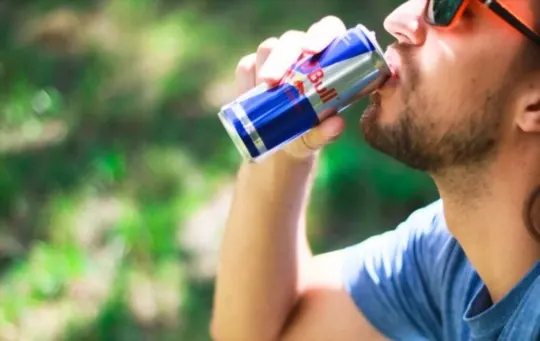
Red Bull has a unique and distinct taste that is difficult to describe.
It can be described as sweet, tangy, and slightly bitter, with a strong flavor of artificial fruit, which is most commonly identified as cranberry or cherry.
The sweetness level is high due to the high sugar content of Red Bull.
Carbonation gives Red Bull its fizziness and adds to the unique mouthfeel of the drink.
The caffeine content in Red Bull gives it a slightly bitter aftertaste.
Red Bull has a fruity fragrance and aroma, with only a faint scent of caffeine.
To sum up, Red Bull is a sweet yet slightly bitter energy drink with a strong artificial fruit flavor and aroma, fizzy carbonation, and a caffeine boost.
If you want to try Red Bull for the first time, start with a small serving, as excessive consumption can cause side effects like heart palpitations, jitters, and insomnia.
Ingredients that Affect the Taste of Red Bull

Red Bull has a unique taste that can be attributed to its specific ingredients.
The key ingredients that affect the taste of Red Bull are as follows:
- Caffeine: Red Bull contains 80mg of caffeine per 8.4 fl oz can, which contributes to its bitter taste.
- Taurine: Taurine is an amino acid that’s found in high concentrations in Red Bull. It has a slightly bitter taste and helps to balance out the sweetness of the other ingredients.
- Sugar: Red Bull contains 27 g of sugar per 8.4 fl oz can, which gives it a sweet taste.
- B-vitamins: Red Bull contains B-vitamins, including niacin, pantothenic acid, B6, and B12, which contribute to its slightly medicinal taste.
- Carbonation: Red Bull is carbonated, which gives it a refreshing and slightly acidic taste.
Knowing these ingredients can help you understand the unique taste of Red Bull and how it compares to other energy drinks on the market.
To balance out the bitterness of Red Bull, try mixing it with other drinks, like orange juice or cranberry juice, to create a refreshing beverage with a unique taste.
1 – Caffeine and Taurine
Red Bull is a popular energy drink that contains caffeine and taurine, among other ingredients, giving it a distinct taste and energy-boosting properties.
Here’s what you need to know about the taste of Red Bull.
- Flavor: Red Bull has a sweet and slightly bitter taste, with a medicinal aftertaste due to the presence of caffeine and taurine.
- Ingredients: Red Bull contains caffeine, taurine, B vitamins, sugar, and artificial flavors.
- Texture: Red Bull has a fizzy and carbonated texture, similar to that of soda pop.
- Serving suggestions: Red Bull is best consumed chilled or over ice, and it can also be used as a mixer in cocktails.
While the taste of Red Bull might not be for everyone, it’s a popular energy drink that can provide a quick boost of energy and alertness.
However, it’s important to consume Red Bull in moderation due to its high sugar and caffeine content.
2 – Sugar and Artificial Sweeteners
This heading appears to be unrelated to the given article title ‘What Does Red Bull Taste Like? Everything You Need to Know’.
Therefore, I’ll assume that the sub-heading is a separate article on the topic of Sugar and Artificial Sweeteners.
Sugar and artificial sweeteners, both have their pros and cons, and choosing between them is a personal preference that depends on taste, diet, and health goals.
Sugar is a natural sweetener that has been used for centuries, and adds a distinct flavor to foods and drinks.
However, overconsumption of sugar is linked to health issues such as obesity, diabetes, and heart disease.
Artificial sweeteners, on the other hand, have zero calories and are a popular substitute for sugar.
These sweeteners are safe for most people but may cause digestive issues in some individuals.
However, some studies have suggested they lead to a higher risk of certain health problems.
Here are some facts about sugar vs artificial sweeteners:
- Sugar provides calories while most artificial sweeteners do not.
- Artificial sweeteners are much sweeter than sugar, and therefore a small amount is enough to go a long way.
- Some examples of artificial sweeteners include saccharin, aspartame, sucralose, and stevia.
- Some people may experience headaches, bloating, and other digestive issues when consuming artificial sweeteners.
It’s important to read labels and be mindful of the sweeteners we consume, both in our food and drinks.
Moderation is key.
3 – Other Flavorings and Additives
Red Bull has a unique taste that is energizing and mildly sweet, thanks to its signature mix of caffeine, taurine, sugar, and other flavorings and additives.
Here are the key flavorings and additives in Red Bull:
- Caffeine: Red Bull contains around 80mg of caffeine per 8.4 fl. oz. serving, which is equivalent to about one cup of coffee. This gives you a quick energy boost and wakes you up.
- Taurine: This is an amino acid found naturally in our body. Red Bull contains around 1000mg of taurine per serving, which supports brain function and boosts energy levels.
- Sugar: Red Bull contains about 27g of sugar per serving, which provides the body with quick energy but also leads to crashes later. There are sugar-free versions of Red Bull available that contain artificial sweeteners instead of sugar.
- Other Additives: Red Bull also contains several other flavorings and additives, including B vitamins (niacin, B6, and B12), citric acid, and natural and artificial flavors. These ingredients enhance the taste, texture, and shelf life of the drink.
While Red Bull’s flavor is difficult to describe, it can be said that it has a unique taste that can be an acquired taste for some.
The combination of caffeine, taurine, sugar, and other additives gives Red Bull a slightly sweet and citrus flavor.
Pro tip – You can also mix it with other drinks to create your own custom energy drink cocktail.
History and Popularity of Red Bull
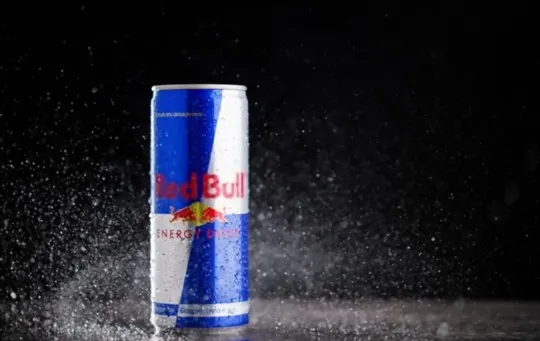
Red Bull was introduced in 1987 in Austria and quickly became one of the most popular energy drinks in the world.
It has a distinct taste that sets it apart from other energy drinks on the market.
Here’s what you need to know about the taste of Red Bull:
Red Bull has a sweet and tart flavor, with a slightly medicinal taste.
Many people describe its taste as being similar to cough syrup or liquid sweet tarts.
It has a carbonated mouthfeel and is often described as being fizzy or bubbly.
Red Bull contains caffeine, taurine, and other energy-boosting ingredients that can leave a bitter aftertaste for some drinkers.
The flavor profile of Red Bull makes it a versatile mixer for alcoholic beverages, including vodka and Jägermeister.
Despite its initial success, many other energy drink brands have since emerged on the market, offering similar taste profiles and additional health benefits.
Pro tip: To enhance the taste of your Red Bull, try serving it chilled or pairing it with a sweet or savory snack.
How to Drink Red Bull and What to Mix It With?
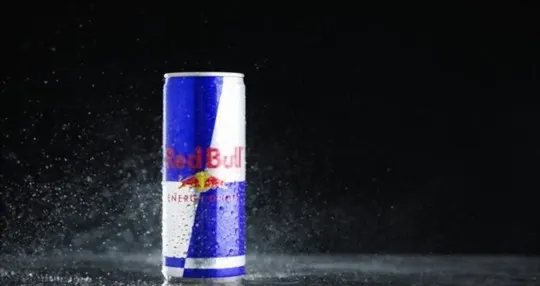
Red Bull is a highly caffeinated energy drink with a unique taste that can be an acquired taste for some.
The flavor has been described as sweet, tangy, and slightly medicinal, with a carbonated texture.
If you’re a fan of Red Bull or looking to try it for the first time, here are some popular ways to drink it:
- Solo: Drink a can of Red Bull on its own for an instant boost of energy.
- Cocktails: Mix Red Bull with your favorite liquor to create a bubbly cocktail. Vodka, tequila, and Jagermeister are popular choices that pair well with Red Bull.
- Smoothies: Add Red Bull to your favorite smoothie recipe for an added energy boost. Popular smoothie ingredients to combine with Red Bull include strawberries, bananas, and spinach.
- Mocktails: Mix Red Bull with fruit juice or soda to create a non-alcoholic cocktail. The sweet and tangy flavor of Red Bull pairs well with a variety of juices and sodas.
It’s important to note that Red Bull contains high levels of caffeine and sugar, so it’s best consumed in moderation.
If you’re new to energy drinks or have certain medical conditions, it’s best to consult with your healthcare provider before drinking Red Bull.
For a refreshing and energizing summer drink, freeze a can of Red Bull into ice cubes and add them to sparkling water or lemonade.
Possible Side Effects and Risks of Drinking Red Bull
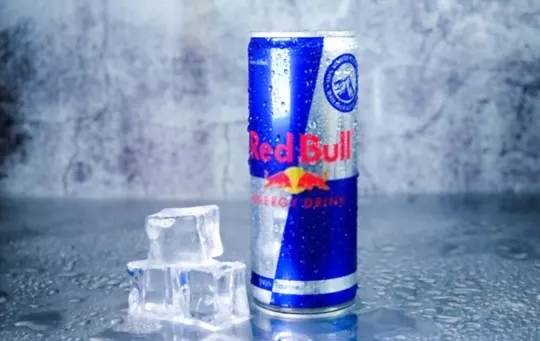
The article is not about the possible side effects and risks of drinking Red Bull.
It is about the taste of Red Bull, and everything a person needs to know about it.
However, it is important to be aware of the possible side effects and risks associated with consuming Red Bull.
Here are some of the possible side effects and risks of drinking Red Bull:
- Caffeine Overdose: Red Bull contains high levels of caffeine, and consuming too much can lead to caffeine overdose, which can cause symptoms such as palpitations, nausea, and insomnia.
- Type 2 Diabetes: Regular consumption of sugary energy drinks like Red Bull can increase the risk of developing type 2 diabetes.
- Tooth Decay: The high sugar content of energy drinks can cause tooth decay and cavities.
- Addiction: The caffeine and sugar present in Red Bull can be addictive, and regular consumption can lead to dependence.
While drinking Red Bull in moderation may have mild benefits, it is important to be aware of the potential risks and side effects.
It is advisable to consume in moderation and avoid excessive consumption to prevent caffeine overdose and other health risks.
If you’re looking for an energy boost, there are many natural alternatives to Red Bull, such as green tea, matcha, and ginseng.
Conclusion
In conclusion, Red Bull is a popular energy drink that has a unique taste profile that can be difficult to describe.
While the drink is marketed as having a sweet and fruity taste, many consumers note that it has a strong, bitter, and acidic flavor that can be attributed to its high caffeine and taurine content.
Additionally, Red Bull’s carbonation and caffeine content give the drink a sharp and fizzy mouthfeel that can be refreshing to some and overwhelming to others.
If you are someone who enjoys the taste of Red Bull, you might also be interested in trying out some of the other energy drink varieties on the market.
However, it’s important to remember that these drinks should be consumed in moderation, as the high sugar and caffeine content can have negative health effects when consumed in excess.
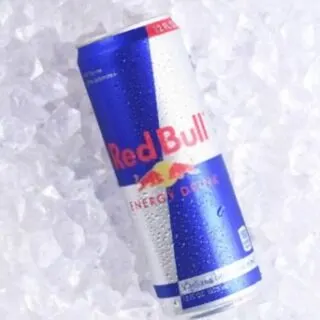
What Does Red Bull Taste Like? A Comprehensive Guide
Ingredients
- Red Bull
- Ingredients from your selected recipes
Instructions
- Select your favorite ingredient from the range available in this article.
- Collect all the necessary items to make the recipe.
- Use the instructions provided to prepare a delicious dish in 30 minutes or less.

Carrie is a food writer and editor with more than 15 years of experience. She has worked for some of the biggest names in the food industry, including Bon Appétit, Food & Wine, and Martha Stewart Living.
As the Editor in Chief of IntroChicago.com, Carrie oversees all of the content on the site. She also manages the team of contributing writers and editors, who help to create delicious recipes, helpful tips, and informative articles that you’ll find on the site.
A native of the Chicago area, Carrie is passionate about all things food. She loves trying new restaurants and experimenting with new recipes in her kitchen. She’s also a graduate of the Culinary Institute of America, so she knows a thing or two about food!
